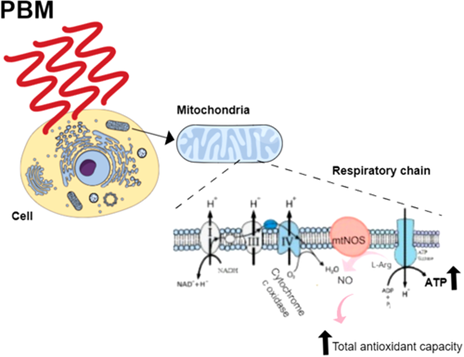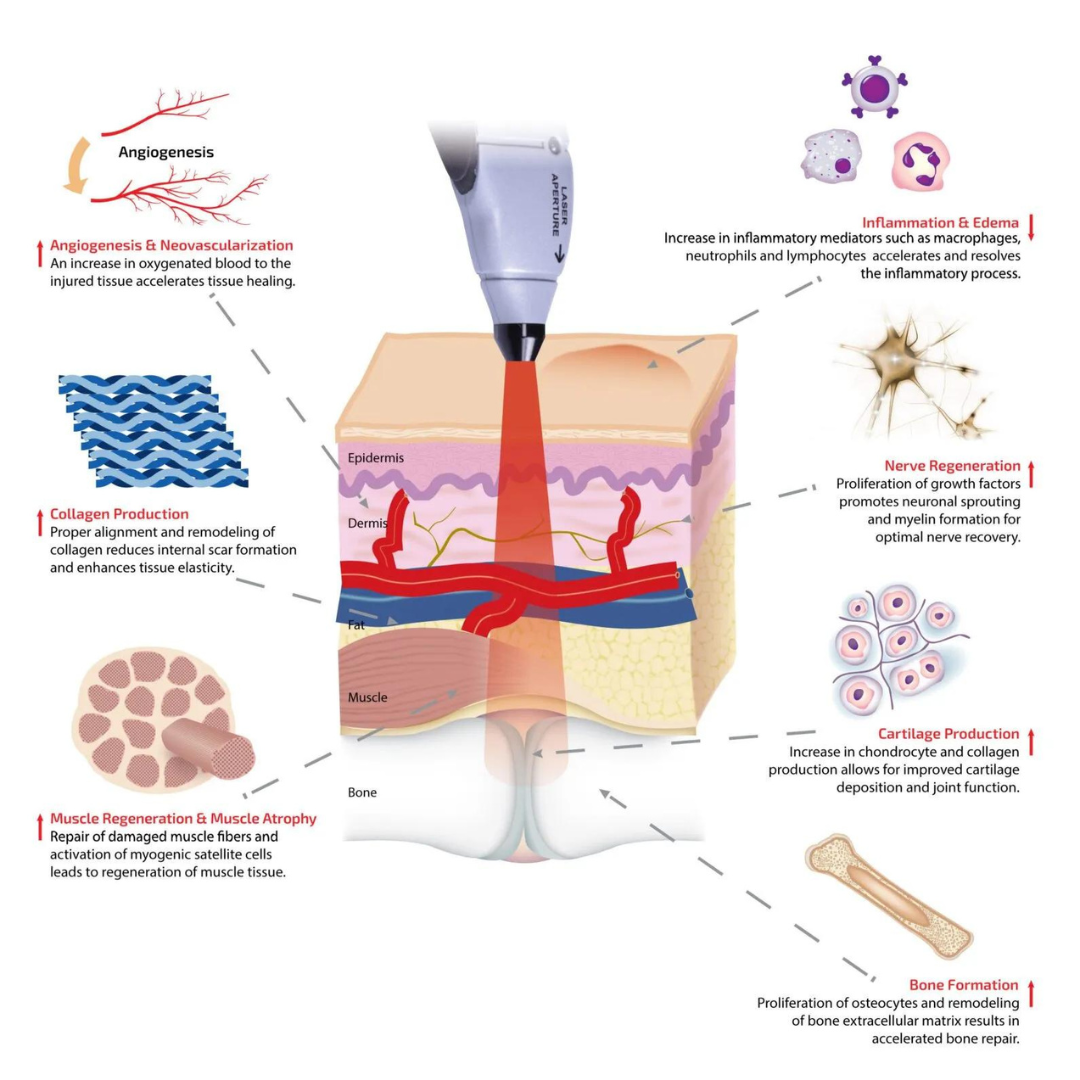Photobiomodulation Can Be Fun For Everyone
Wiki Article
Photobiomodulation - Questions
Table of ContentsThe 4-Minute Rule for PhotobiomodulationThe Ultimate Guide To PhotobiomodulationThe Best Strategy To Use For PhotobiomodulationThe smart Trick of Photobiomodulation That Nobody is Discussing
Laser therapy is a medical treatment that uses focused light to boost a procedure called. Throughout PBM, photons enter the tissue and communicate with the cytochrome c complicated within mitochondria. This communication sets off a biological waterfall of occasions that results in a boost in mobile metabolic rate, which can as well as speed up the healing procedure.There is agreement that the application of a restorative dose of light to impaired or inefficient tissue causes a cellular feedback mediated by mitochondrial systems. Photobiomodulation. Studies have actually shown that these modifications can impact pain and swelling, as well as, tissue fixing
Changes in ATP, responsive oxygen types and nitric oxide adhere to light absorption by Cc, O. These results are redox state and dosage reliant.

The Ultimate Guide To Photobiomodulation
PBM tools have been cleared for marketing by FDA with the Premarket Notification/510( k) procedure as adjunctive devices for the momentary relief of pain. These clearances were based upon the presentation of medical information to sustain such claims (Photobiomodulation). In this treatment, a light resource is positioned near or touching the skin, allowing the light power (photons) to permeate cells where it connects with chromophores situated in cells causing photophysical and photochemical adjustments that cause alterations at the molecular, mobile and cells levels of the bodyRemarkably, current research indicates that light can boost efficiency in regular cells and cells. The possible applications of PBMT are numerous and are being checked out experimentally at the standard science, pre-clinical and professional level. The present professional uses are for the alleviation of pain and inflammation and the treatment of sporting activities injuries.

The therapy specifications and number of sessions needed for PBMT depend on location and cause. PBMT typically needs more than one treatment for ideal discomfort relief. It may take numerous therapies for the outcomes to become obvious. reports that it can take anywhere from eight to 30 sessions for a therapy to be completely effective, and some patients find it required to undergo therapy two to four times per week.
Photobiomodulation Things To Know Before You Get This
Treatment specifications for PBMT were originally developed using cells in vitro and in little animal models. These treatment criteria usually had a low irradiance and fluence and functioned well for cutaneous applications. Nonetheless when clinicians began to utilize PBMT to treat frameworks that lay deeper in the body, they used these parameters with unfavorable outcomes.
We now recognize that these adverse studies was because of inaccurate device and treatment parameters for transcutaneous treatment of much deeper structures. Current advances in laser therapy gadgets and even more research right into the suitable does have drastically improved the results of PBMT. For treating deep tissues, the wavelength of light made use of identifies the depth of penetration right into a cells.
It is important that a why not find out more clinician uses the proper wavelength of light and criteria to treat a condition. One wavelength and one collection of therapy parameters will certainly not be reliable for all problems. Negative side impacts have actually not been reported from the use of PBMT.
Photobiomodulation Fundamentals Explained
In the very first experiment, Dr. Endre Mester, utilized cut rats and observing exactly how the laser influenced their ability to grow hair compared to the group that was not getting LLLT. He discovered that the group of computer look at this now mice obtaining LLLT were able to expand their hair back faster than the team of computer mice that really did not get LLLT (Hoon C, et alia; 2012).This therapy is labelled this way to separate the distinction between the lasers some professions use to reduce (eg. Low-level light treatment is pain-free, non-invasive therapy.
LLLT has a biphasic feedback, meaning that lower doses are usually attended be extra advantageous than higher dosages. That being stated, doses higher or less than the optimum dosage does not impact (Hoon C, et alia; 2012). For this factor, it can be difficult to have studies on LLLT with many specifications.
Some business incorporated both (LED and laser) to offer a more all-around treatment try this out because lasers can permeate deeper than LED and infrared light (Norman Doidge, The Brain's Means of Recovery, 2015). During treatment, the area that is being dealt with is exposed to LED light from a Bio, Flex Laser, which goes to 660 nm wavelength, followed by infrared light at 830-840 nm wavelength.
Report this wiki page